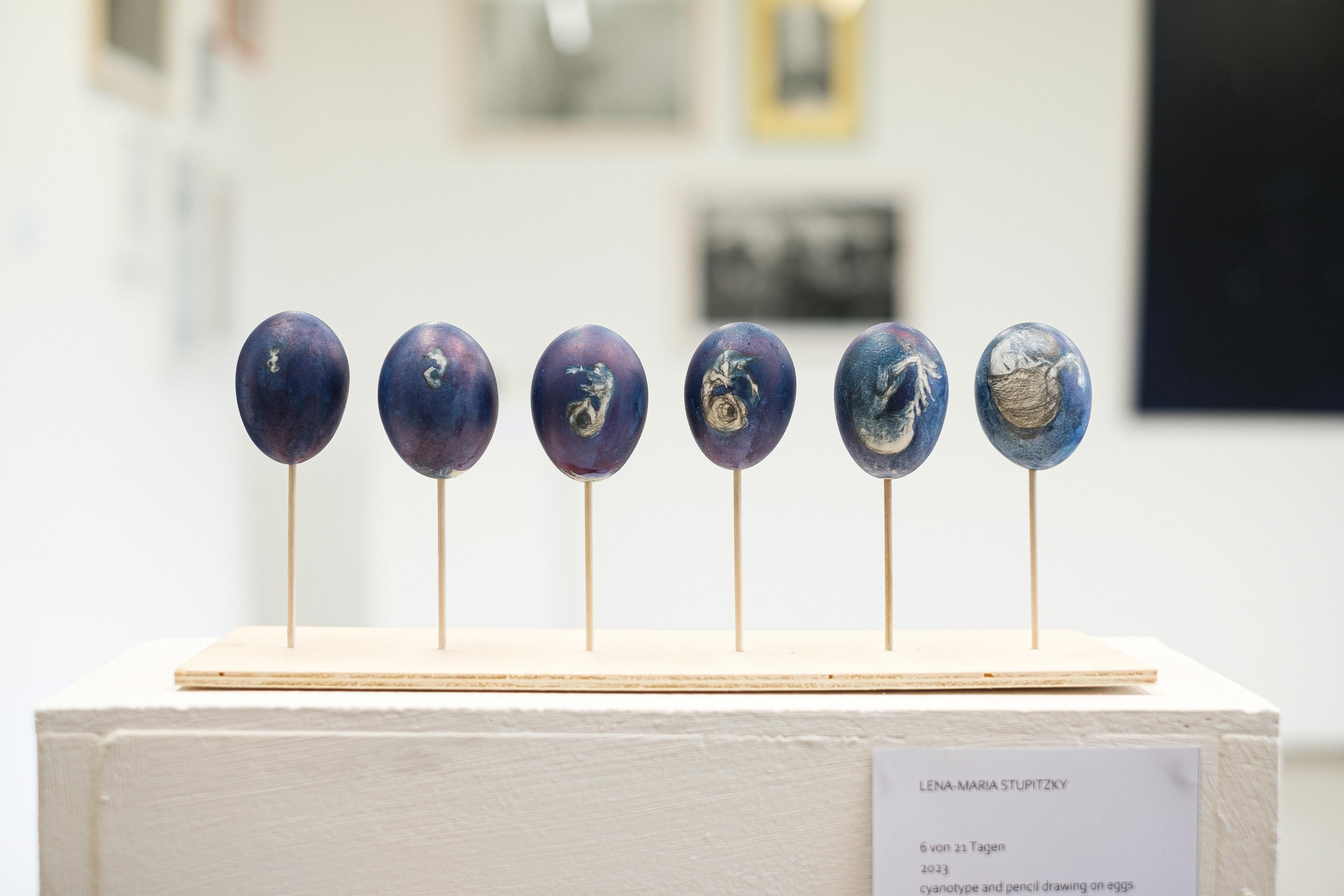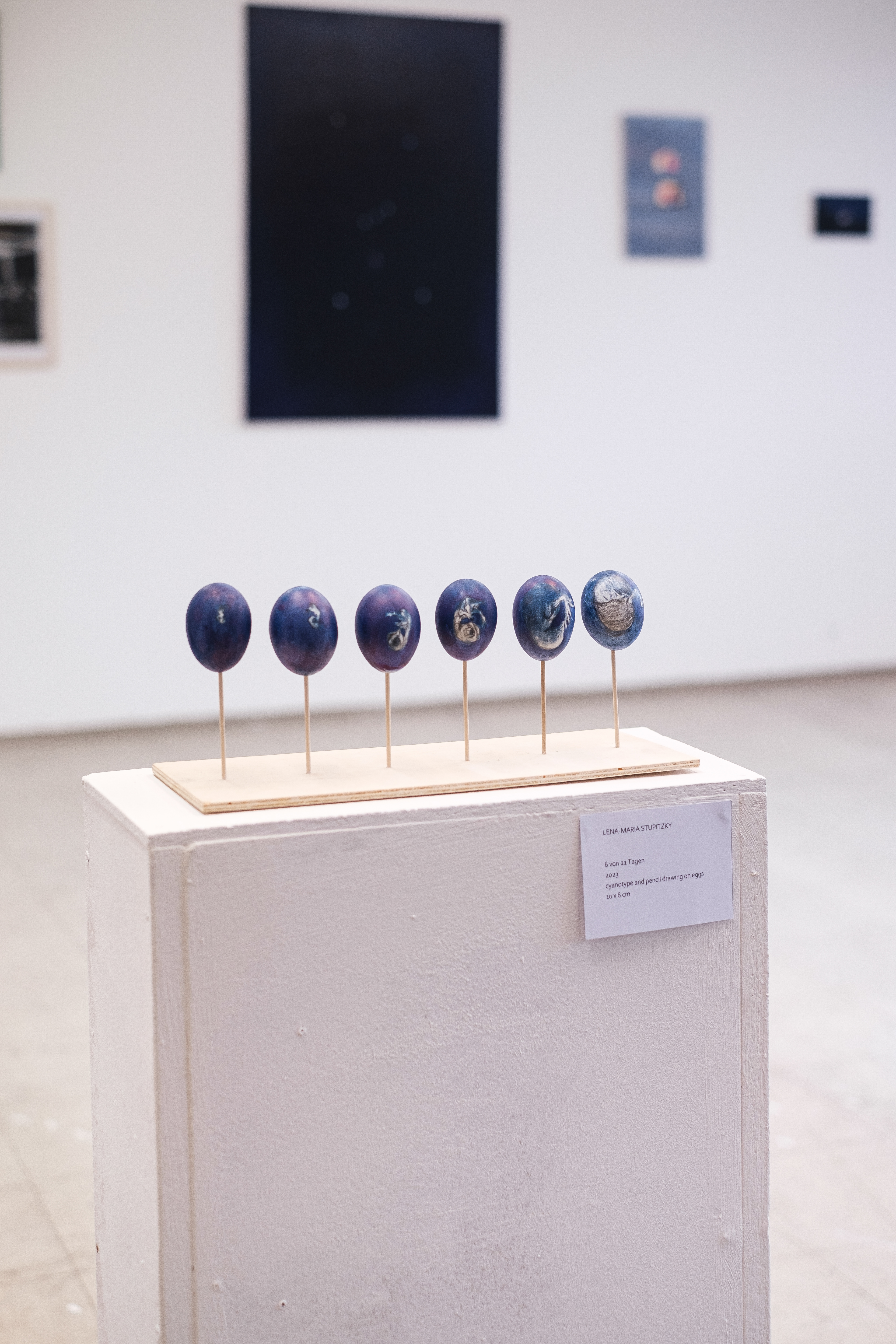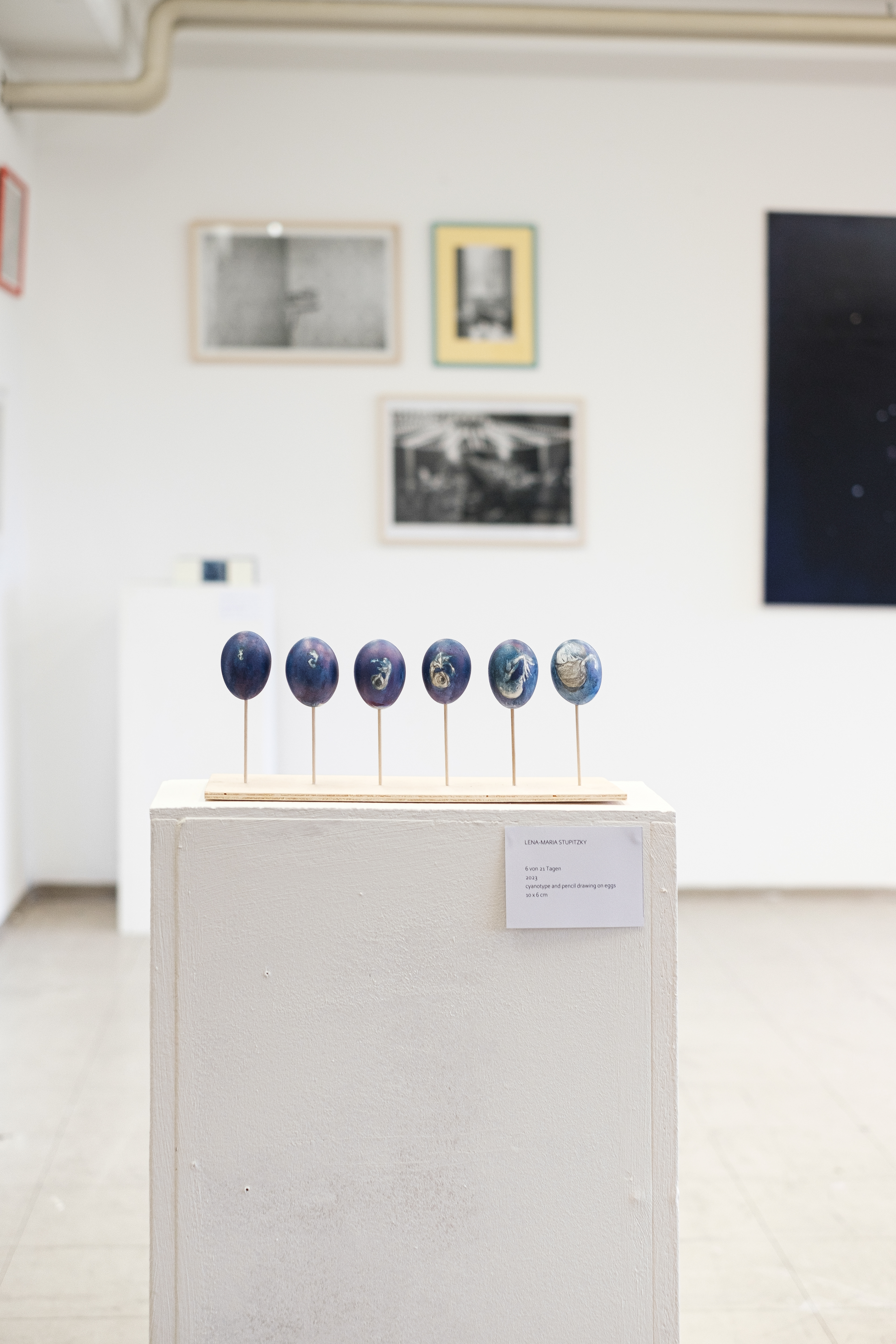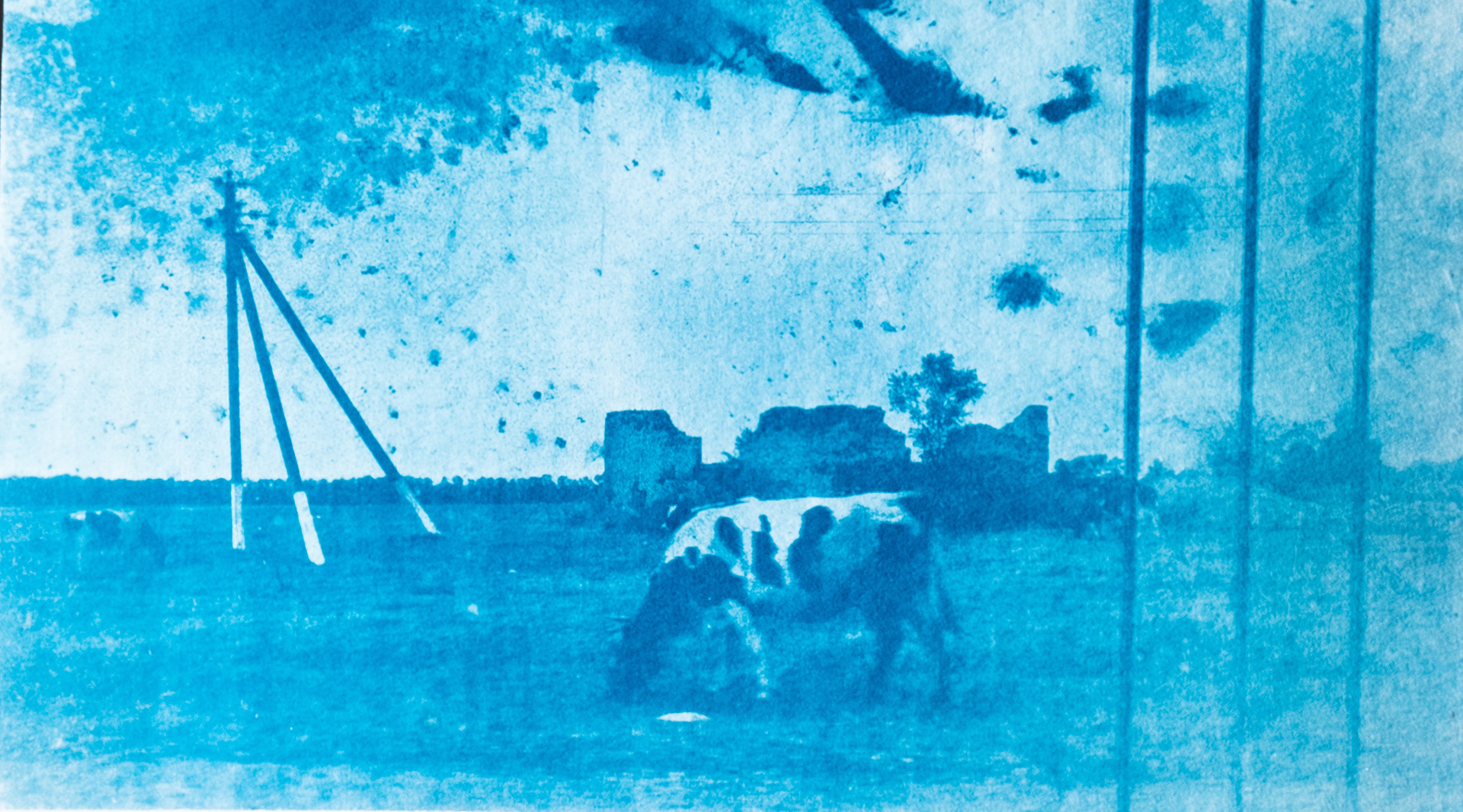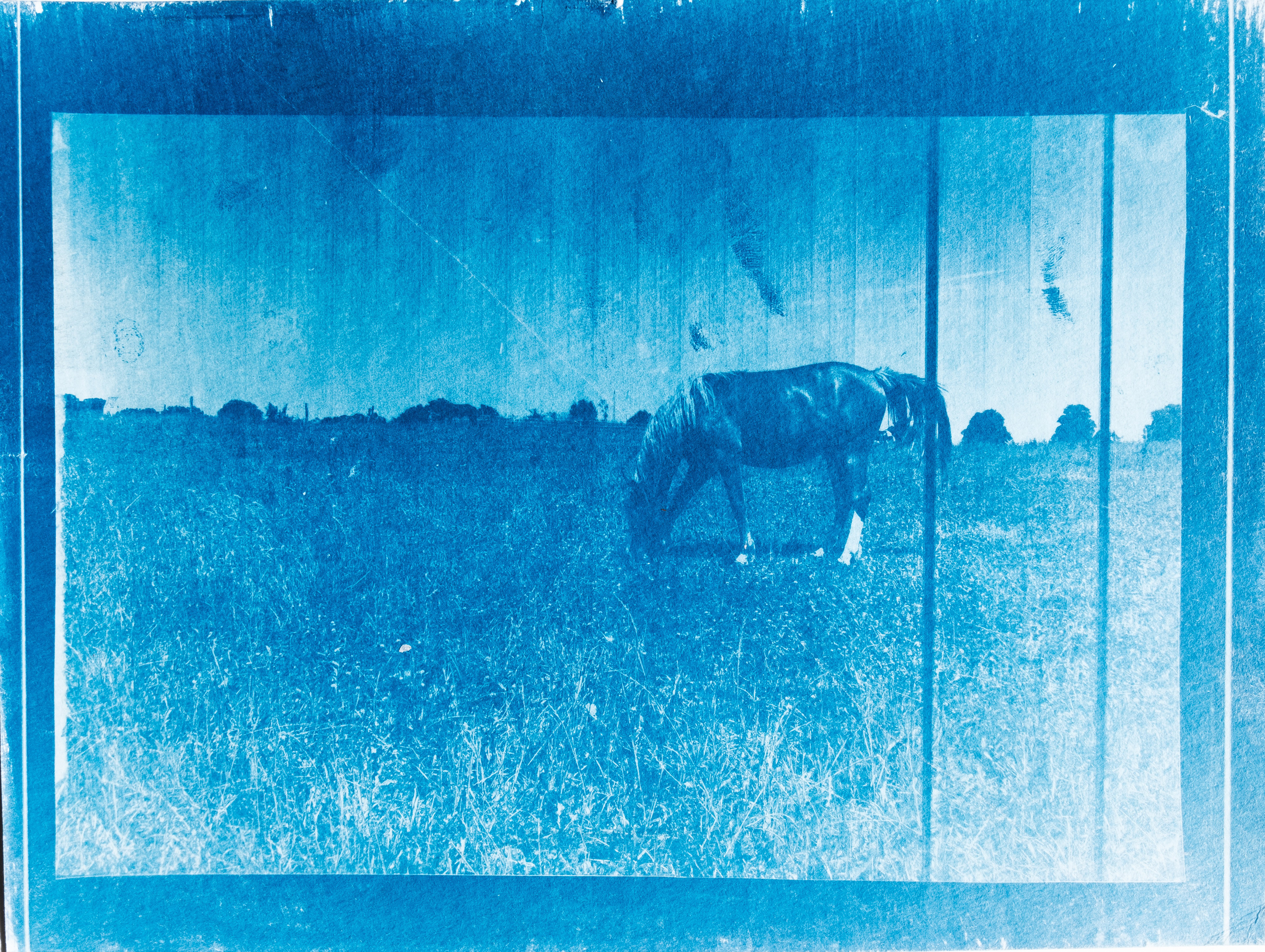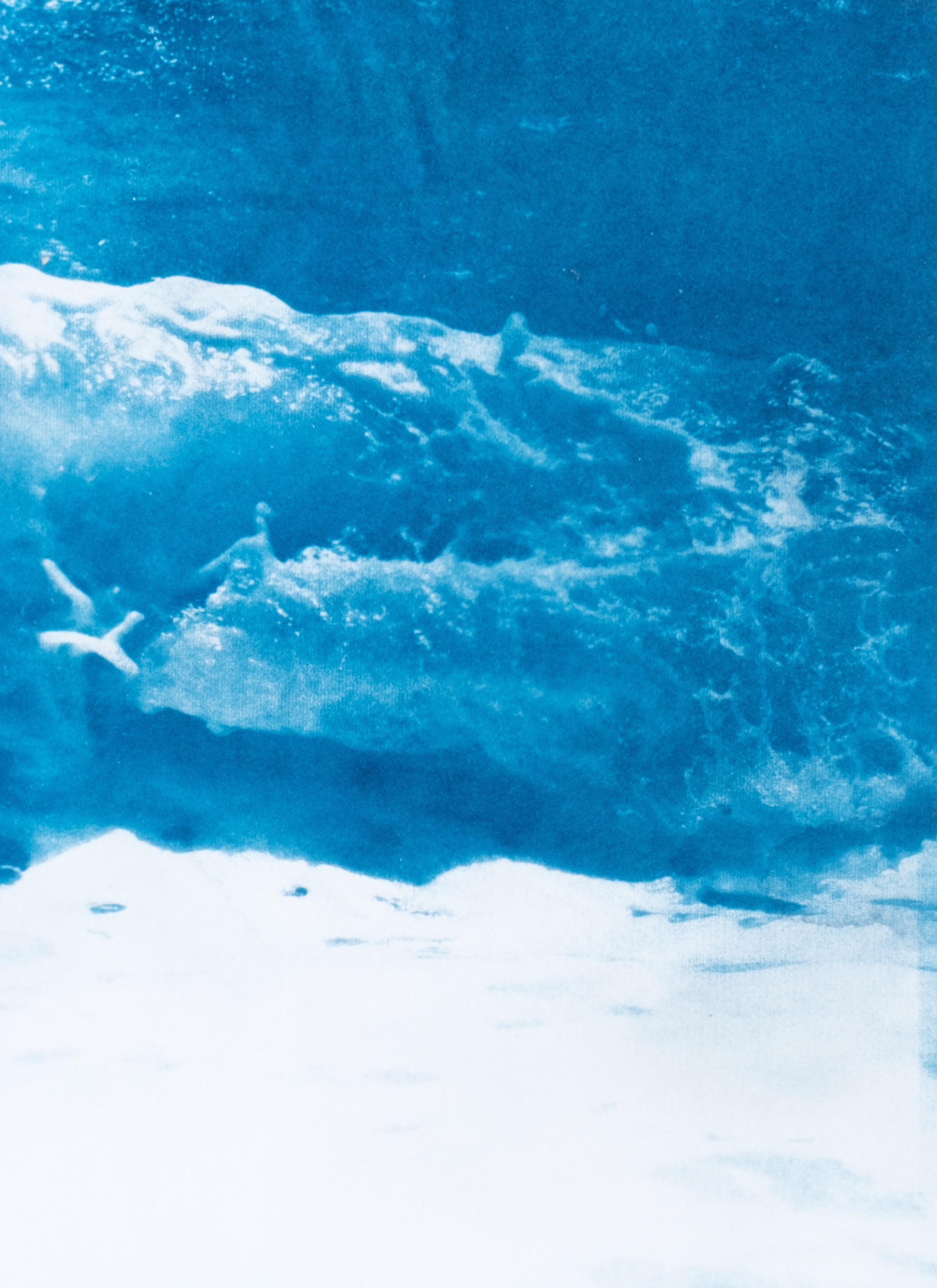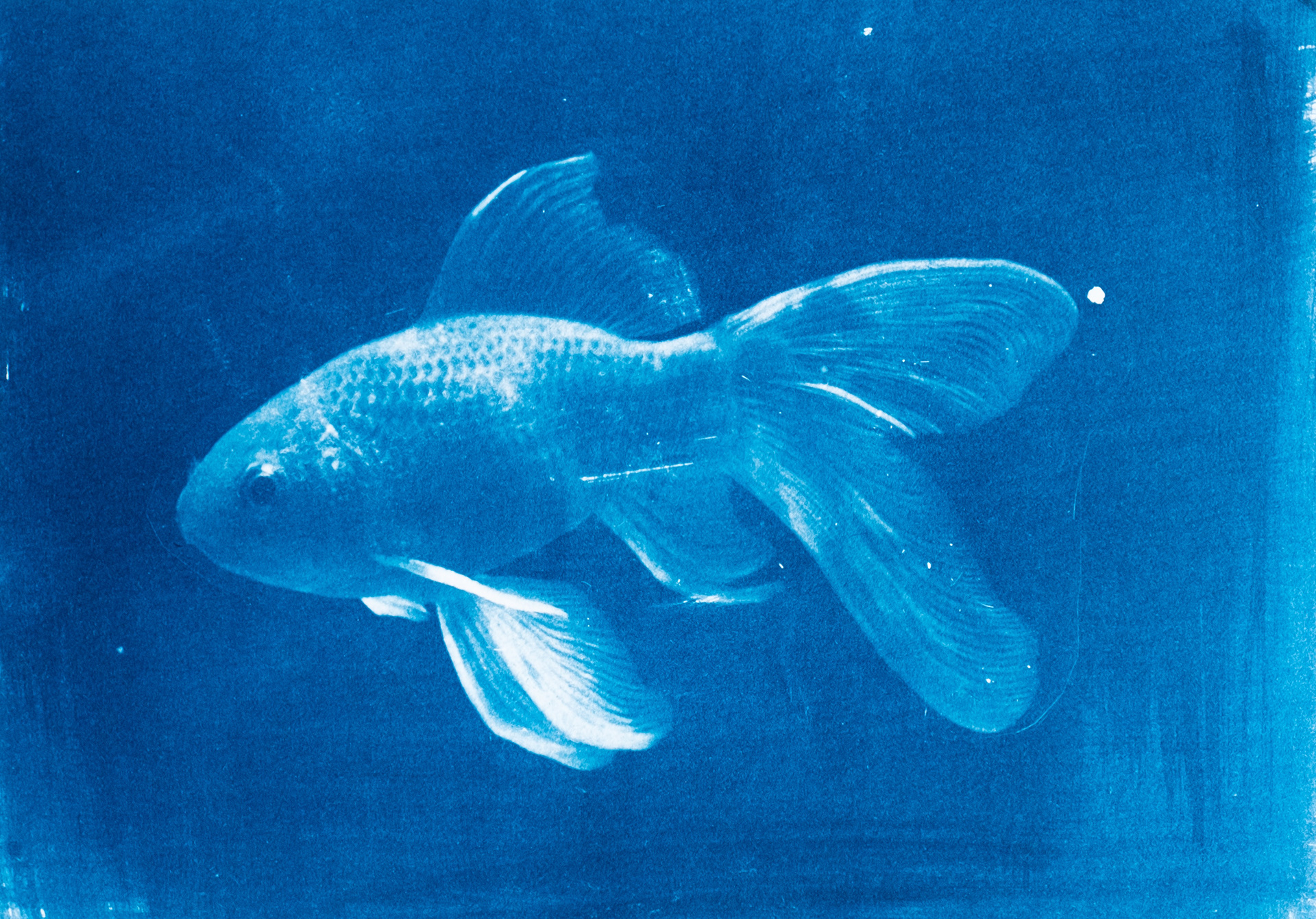In 1842, the English scientist and astronomer John Herschel developed the cyanotype. This was the third process for creating stable photographic images after the daguerreotype and calotype. Unlike traditional methods based on silver, the cyanotype is based on iron.
The British scientist Anna Atkins popularized this photographic technique through her books, in which she documented ferns and other plants with cyanotypes. She is considered the first female photographer due to this early application.
Since 1870, the cyanotype has been widely used for copying plans, thus creating blueprints. The duplication and sensitization of the paper was done by oneself before photosensitive papers became commercially available in Paris in 1876 (Marion Cie.). Exposure is carried out with UV or sunlight. Around 1895, electrical exposure devices were introduced. Only in the 1920s were fully automatic machines available that carried out a complete workflow (exposure, fixing, drying). Before the Second World War, the cyanotype as a method of drawing copy was replaced by the dry-working diazotype.
